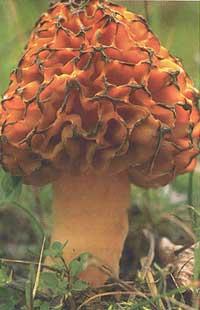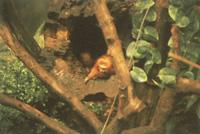The Swirl of the Last Mohicans: scarcity
1997/02/01 Diaz Silvestre, Estibaliz Iturria: Elhuyar aldizkaria
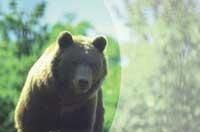
The human being, with an enormous capacity to transform the environment, has colonized the whole world transforming the habitat of many living beings and overexploiting many resources. As a result, the population has reduced considerably creating a set of problems that will drive it to extinction.
Small populations tend to disappear and various factors influence them. These include:
• Demographic variability
Small populations always depend on chance, at the limit of extinction. In many species it is possible to quantify the average number of offspring, average mortality or proportion of males and females in newborns. If the population size is large, these calculations can be quite accurate. In small populations, however, chance has a great influence. For example, in most species, half of newborns are male and half are female. But half of a female's pups should not necessarily be female. Thus, if the population is very small, it can happen that there are few newborns, that the sexual distribution is much diverted or that many specimens die at a certain time. Unlike large populations, in small populations the extinction is always close and if for any reason the amount low to zero, the population will not be able to recover.
These randomly induced fluctuations are called demographic stochastic. Suppose a bird population made up of two couples with an average of 3 children. The population should increase, although the probability of population growth in the next generation is 20/64, maintain 30/64, decrease 12/64 and disappear 2/64 (see table 1).
Possible
combinations of descendants
Male Male Male Male Male Male Male Male Male Female Female Female Female Female Female Female
Female
Female Female Female Female
6/64
15/64
20/64
15/64
6/64
1/640 1
2
2
1
0Destruction Maintain Increase Maintain Reduction Destruction
• Genetic problems
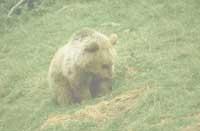
As mentioned above, demographic variability is a serious problem in small populations, but not the only one. In addition, small populations present important genetic problems. The genetic information of these living beings is divided into units called genes and the location of each gene on the chromosome is called locus. In each locus there can be different gene forms, alleles. The genetic diversity existing in the population, that is, the diversity of alleles, is very important, since it allows to adapt to the changes of the environment.
When individuals cross over to reproduce, their genes are randomly mixed and therefore new genetic combinations appear in future generations. If an allele is scarce in small populations, it can easily disappear at random and therefore decrease genetic diversity. The variation of the randomly occurring group of genes is called genetic drift (Table 2, Figure 1). Its influence is even more pronounced in small populations and, above all, if at any given time that population has gone through a minimum number of specimens (a sama bottle). For example, in the crater of Ngoron of Tantzania lived between 60 and 75 lions until in 1962 the parasites proliferated and many lions died. Genetic diversity was considerably reduced and although new specimens were introduced in 1964, genetic diversity is very low and numerous anomalies in sperman are observed (Figure 2).
0,0,0,0,0,0,0,0,0,0,0,0,0,0,0,0,0,0,0,0,0,0,0,0,0,0,0,0,0,0,0,0,0,0,0,0,0,0,0,0,0,0,0,0,0,0,0,0,0,0,0,0,0,0,0,0,0,0,0,0,0,0,0,0,0,0,0,0,0,0,0,0,0,0,0,0,0,0,0,0,0,0,0,0,0,0,0,0,0,0,0,0,0,0,0,0,0,0,0,0,0,0,0,0,0,0,0,0,0,0,0,0,0,0,0,0,0,0,0,0,0,0,0,0,0,0,0,0,0,0,0,0,0
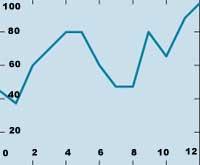
In small populations, genetic diversity can be lost in another way: due to the abundance of crosses between their blood components, the likelihood of the same allele appearing in a gene, with the consequent loss of heterozycence. According to Lacy, populations of five hundred individuals to one hundred generations maintain 90% of their original diversity, while those of twenty individuals only do so 5% (see figure 3).
The loss of variability can be compensated by mutation and immigration, but the recovery of low mutation rates in nature is not easy: crossing with specimens from another group can produce enormous genetic variability.
• Environmental alterations and natural disasters
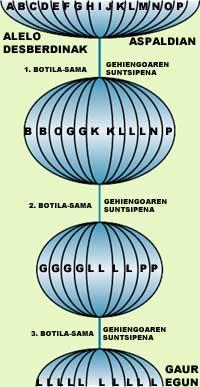
Random changes in the environment are called environmental stochastic. Environmental changes affect populations of all dimensions, but of course their size has a lot to do with. For example, when a ray kills a grain in a population of five hundred copies, the dynamics proper to the population does not vary significantly, while if this population is composed of only ten individuals, the effect is much more violent. This type of stochastic affects more directly than demography the viability of the population (see Figure 4).
From the above it is concluded that the smaller the population, the greater the influence of environmental variability, demographic and genetic problems, which will result in a greater risk of destruction. This phenomenon is called the Zurrunbilo effect. Therefore, the decrease of the population in the decrease of the habitat will result in a greater influence of demographic variability, with a decrease of the size, while increasing the incidence of genetic drift and once introduced in this whirlpool, the extinction of the population can be considered practically safe (see figure 5).
Population status analysis
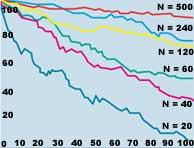
If we know the variability of the environment, population demographic variability and genetic diversity, we can calculate which is the smallest population that can remain risk-free or to what extent a population of a certain dimension is viable. The first is called the Minimum Viable Population (PMP) and the second Population Feasibility Analysis (PBA). Shafer defined MBP as the lowest isolated population with a 99% probability of subsistence in 100 years, taking into account demographic, environmental, genetic and natural catastrophes stochastic.
For this, of course, we need a lot of information (physiology, ethology, genetics, distribution, autoecology, dynamics of the environment and population, etc.) and in many cases most of these data are unknown. For example, Lande proposed the repression of 1,000 vertebrate specimens, which in the case of invertebrates, due to the variability of populations, forced 10,000 specimens. However, maintaining a population of thousands of individuals is not easy, especially in the case of large vertebrates, whose Minimum Surface Demand (RME) is very high. According to Belovsky's estimate, large mammals would need reserves of between 100,000 and 1,000,000 km 2 to survive in a century to 95%. If we consider that the surface of the world reserves is 4,846,300 km 2, the protection of species diversity necessarily implies the extension of protected spaces.
Category Mace LandeMaceIncritical
condition Threatened Vulnerable 50% 5 years or
2 generations 20%
20 years or 10% 100 years in
10 generations 50%
5 years or
2 generations 20%
20 years or
5 generations 10%
50 years or
10 generations.
The PBA index can also be used as a classification criterion in the red book of the conservation status of species published by the IUCN. Based on the results of the PBA, a classification with three categories is proposed: vulnerable species, endangered species and in a critical situation (see table 3). The problem is that not all species are known at the same level and that quantification of parameters requires a lot of precision. To analyze the influence of the stochastic phenomena mentioned in the risk of extinction, computer simulation models are carried out that allow to measure the PMB (see figure 6).
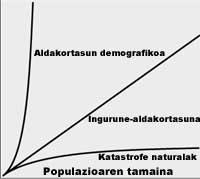
Models built so far have been used for isolated populations. But in nature, populations are divided into a mosaic called metapopulation. As mentioned above, migration between them, in addition to increasing genetic variability, acts in other ways in the viability of the population: by changing the conditions from one place to another, not all will suffer catastrophic or environmental alterations and, therefore, despite the disappearance of a population, another can recolonize the territory left by it, thus allowing the duration of the metapopulation. Therefore, it would be advisable to build a model that contemplates interactions between populations (Figure 7).
An example of this is the brown bear of the Rocky Mountains. According to estimates made by Shafer in 1983, the PMB is 50, while Bolger estimates it to 220. The AME required by this amount would be higher than the largest US reserve. If only six bears remain in the Pyrenees, their probability of survival would be less than 20 years1 (see table 4).
Population numbers100 years probability (%)Most likely duration (years)1020
30
40
506
36
74
94
9819
44
69
79
114
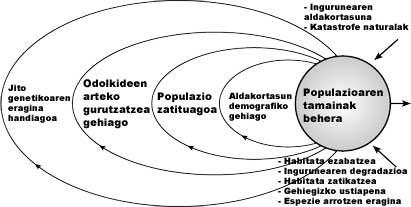
Since Pyrenean bears cannot endure in the future, bear management should be carried out at the metapopulation level, including populations outside this area. Thus, the introduction of bears from the outside would allow greater viability of the Pyrenean bears. On the other hand, although it is believed that the population of wolves has increased, in the Iberian peninsula its future is quite uncertain, since currently there are only 500 specimens, half of the 1,000 specimens proposed by Land.
Looking ahead
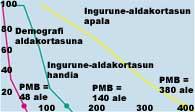
The calculation sessions of PBA, PMB and AME carried out in recent years have made us see a worrying image. Many populations will not be viable in the long term, as more specimens are needed than previously thought to ensure their survival and the areas of protection that would be needed are much wider than the current ones. But there are no hopeless cases, but unhopeful people and expensive cases. In this sense, we find the need to correct two problems: the need for larger reserves and larger populations, which would allow us to lay the foundation for working on the conservation of species. Subsequently, the corresponding work should be carried out, being able to be included in the measures and planning required by the conservation for each species and contribute, logically, to flee the swirl of the last mohicano.

Gai honi buruzko eduki gehiago
Elhuyarrek garatutako teknologia





